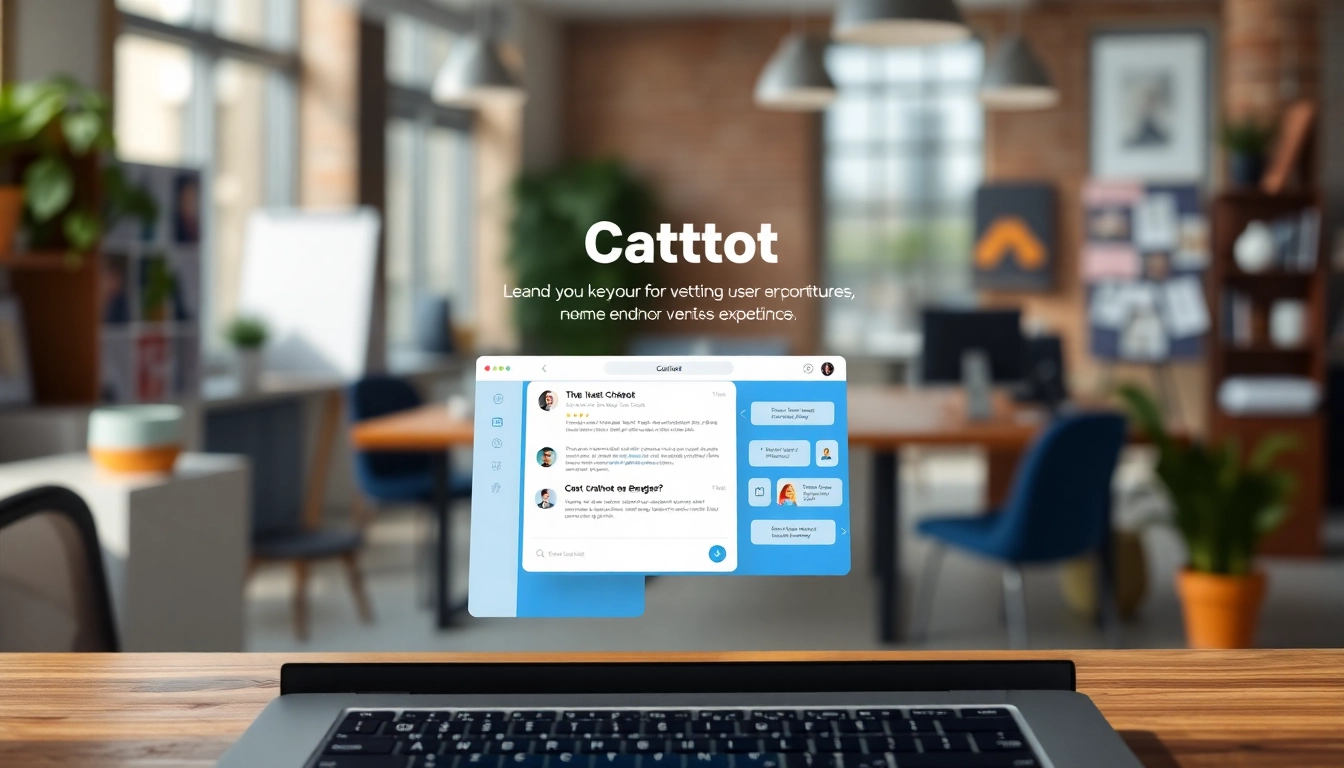Understanding the Importance of a Chatbot for Website
What is a Chatbot and Its Role in Websites?
A chatbot for website is an artificial intelligence system designed to engage and interact with users through text or voice conversations. These bots can provide instant answers, facilitate navigation, and enhance user experiences. Operating either within a website’s interface or as part of a mobile app, chatbots are transforming how businesses communicate with customers. They serve as a virtual assistant, capable of answering frequently asked questions, guiding users through the purchasing process, and handling routine inquiries.
Benefits of Using a Chatbot for Website Interaction
The benefits of integrating a chatbot into your website extend beyond mere convenience. Here are some of the key advantages:
- 24/7 Availability: Chatbots are always available to engage with users, regardless of the time or day, which can significantly enhance customer satisfaction.
- Immediate Responses: They can handle inquiries in real-time, reducing wait times and streamlining user interactions.
- Cost-Effective: By automating routine tasks, chatbots can decrease customer service costs and allow human agents to focus on more complex issues.
- Data Collection: Chatbots can gather valuable data on user preferences and behaviors, which can inform business strategies.
- Consistent Interaction Quality: They provide a uniform experience for users, ensuring that interactions adhere to the business’s communication standards.
Common Use Cases for Chatbots in Different Industries
Chatbots are versatile tools that can be deployed across various sectors:
- Retail: Assisting customers with product recommendations, order tracking, and returns.
- Healthcare: Scheduling appointments, providing medication reminders, and answering common health queries.
- Finance: Offering personalized financial advice, handling transactions, and ensuring secure communications.
- Travel: Helping users with itinerary management, booking processes, and providing travel tips.
Choosing the Right Chatbot for Your Website
Types of Chatbots: Live Chat vs. Automated
When selecting a chatbot, it’s essential to understand the differences between live chat and automated systems. Live chat options connect users directly with human agents, providing a personalized touch that automated bots may lack. However, automated chatbots offer the advantage of instant responses and handling high volumes of user inquiries simultaneously.
Evaluating Features: What Makes a Chatbot Effective?
To ensure a chatbot effectively meets your business needs, consider the following features:
- Natural Language Processing (NLP): Enables users to interact with the bot in a conversational manner.
- Integration Capabilities: Should seamlessly connect with existing CRM systems and other digital tools.
- Analytics and Reporting: Offers insights into user interactions and performance metrics.
- Customization Options: Allows personalization of the bot’s responses and appearance to align with your brand.
Cost Considerations When Implementing Chatbots
When budgeting for chatbot implementation, consider initial setup costs, ongoing maintenance, and subscription fees. Some platforms offer pay-as-you-go models, which can be beneficial for businesses looking to control costs. Moreover, factor in potential savings from reduced customer service staffing needs and increased sales due to enhanced user engagement.
Implementing a Chatbot on Your Website
Step-by-Step Guide to Integration
Integrating a chatbot into your website involves several critical steps:
- Define Objectives: Clearly outline the purpose of the chatbot, such as lead generation, customer support, or providing information.
- Select a Platform: Choose a chatbot platform that aligns with your technical capabilities and business goals.
- Design Conversation Flows: Create dialogue paths that anticipate user questions and responses.
- Integrate with Your Website: Follow the platform’s instructions to embed the chatbot into your site effectively.
- Test Before Launch: Conduct thorough testing to ensure the chatbot operates as planned.
Testing and Optimization Techniques for Chatbots
Testing is vital for ensuring that your chatbot meets user expectations. Use A/B testing to compare different versions of the bot and analyze performance. Gather user feedback through surveys post-interaction to gain insights into areas needing improvement. Regular updates and optimizations based on these findings are crucial for maintaining relevance and effectiveness.
Common Pitfalls to Avoid During Implementation
While implementing a chatbot, several common pitfalls can hinder success:
- Neglecting User Experience: Ensure the chatbot is designed with the user experience in mind, avoiding overly complex dialogues.
- Skipping Testing: Always test the chatbot thoroughly before deploying to identify issues.
- Failing to Update Content: Keep conversation pathways relevant and up-to-date based on trends and user feedback.
Measuring the Impact of Chatbots on Your Website
Key Metrics to Track for Success
To evaluate the effectiveness of your chatbot, monitor key performance metrics, such as:
- Engagement Rate: Analyzes how often users interact with the chatbot.
- Response Time: Measures how quickly the bot responds to queries.
- User Satisfaction Rating: Collected through post-interaction surveys or ratings.
- Conversion Rate: Tracks how many interactions lead to tangible outcomes, such as sales or inquiries.
How to Analyze User Feedback and Interactions
Understanding user feedback is fundamental for ongoing chatbot success. Implement analytics tools that can delineate user behavior, such as common queries and drop-off points. Group feedback into themes to identify areas for improvement or adjustment in your bot’s conversation flows.
Iterating: Making Improvements Based on Data
Adopt an iterative approach to chatbot refinement. Regularly revisit performance data and user feedback to adjust conversation flows, responses, and functionalities. Set up a schedule for periodic reviews to ensure your chatbot evolves with changing user expectations and market trends.
Future Trends for Chatbots in Web Development
The Rise of AI in Chatbot Solutions
The integration of artificial intelligence into chatbot development is rapidly transforming the landscape. AI-driven chatbots can learn from interactions, improving their ability to understand complex queries and provide more accurate responses over time. This adaptability makes them increasingly valuable across various applications.
Integrating Chatbots with Other Digital Tools
Future developments will see chatbots increasingly integrated with other tools, such as CRM systems, marketing automation platforms, and analytics software. This interconnectedness will enable chatbots to deliver personalized user experiences and provide businesses with a comprehensive view of customer interactions across different touchpoints.
Preparing for the Next Generation of User Experiences
As technology evolves, so do user expectations. Future chatbots will likely incorporate voice recognition, supporting interactive dialogues and addressing complex inquiries. Businesses should prepare their chatbot strategies to evolve in tandem with these technological advancements, ensuring they remain competitive in an ever-changing digital landscape.



